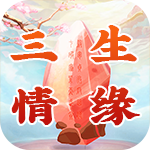1. 請給我關于5
Buddhism (bʊd'ĭzəm) , religion and philosophy founded in India c.525 B.C. by Siddhartha Gautama, called the Buddha. There are over 300 million Buddhists worldwide. One of the great world religions, it is divided into two main schools: the Theravada or Hinayana in Sri Lanka and SE Asia, and the Mahayana in China, Mongolia, Korea, and Japan. A third school, the Vajrayana, has a long tradition in Tibet and Japan. Buddhism has largely disappeared from its country of origin, India, except for the presence there of many refugees from the Tibet region of China and a small number of converts from the lower castes of Hinduism. Basic Beliefs and Practices The basic doctrines of early Buddhism, which remain common to all Buddhism, include the “four noble truths”: existence is suffering (dukhka); suffering has a cause, namely craving and attachment (trishna); there is a cessation of suffering, which is nirvana; and there is a path to the cessation of suffering, the “eightfold path” of right views, right resolve, right speech, right action, right livelihood, right effort, right mindfulness, and right concentration. Buddhism characteristically describes reality in terms of process and relation rather than entity or substance. Experience is analyzed into five aggregates (skandhas). The first, form (rupa), refers to material existence; the following four, sensations (vedana), perceptions (samjna), psychic constructs (samskara), and consciousness (vijnana), refer to psychological processes. The central Buddhist teaching of non-self (anatman) asserts that in the five aggregates no independently existent, immutable self, or soul, can be found. All phenomena arise in interrelation and in dependence on causes and conditions, and thus are subject to inevitable decay and cessation. The casual conditions are defined in a 12-membered chain called dependent origination (pratityasamutpada) whose links are: ignorance, predisposition, consciousness, name-form, the senses, contact, craving, grasping, becoming, birth, old age, and death, whence again ignorance. With this distinctive view of cause and effect, Buddhism accepts the pan-Indian presupposition of samsara, in which living beings are trapped in a continual cycle of birth-and-death, with the momentum to rebirth provided by one's previous physical and mental actions (see karma). The release from this cycle of rebirth and suffering is the total transcendence called nirvana. From the beginning, meditation and observance of moral precepts were the foundation of Buddhist practice. The five basic moral precepts, undertaken by members of monastic orders and the laity, are to refrain from taking life, stealing, acting unchastely, speaking falsely, and drinking intoxicants. Members of monastic orders also take five additional precepts: to refrain from eating at improper times, from viewing secular entertainments, from using garlands, perfumes, and other bodily adornments, from sleeping in high and wide beds, and from receiving money. Their lives are further regulated by a large number of rules known as the Pratimoksa. The monastic order (sangha) is venerated as one of the “three jewels,” along with the dharma, or religious teaching, and the Buddha. Lay practices such as the worship of stupas (burial mounds containing relics) predate Buddhism and gave rise to later ritualistic and devotional practices. Early Buddhism India during the lifetime of the Buddha was in a state of religious and cultural ferment. Sects, teachers, and wandering ascetics abounded, espousing widely varying philosophical views and religious practices. Some of these sects derived from the Brahmanical tradition (see Hinduism), while others opposed the Vedic and Upanishadic ideas of that tradition. Buddhism, which denied both the efficacy of Vedic ritual and the validity of the caste system, and which spread its teachings using vernacular languages rather than Brahmanical Sanskrit, was by far the most successful of the heterodox or non-Vedic systems. Buddhist tradition tells how Siddhartha Gautama, born a prince and raised in luxury, renounced the world at the age of 29 to search for an ultimate solution to the problem of the suffering innate in the human condition. After six years of spiritual discipline he achieved the supreme enlightment and spent the remaining 45 years of his life teaching and establishing a community of monks and nuns, the sangha, to continue his work. After the Buddha's death his teachings were orally transmitted until the 1st cent. B.C., when they were first committed to writing (see Buddhist literature; Pali). Conflicting opinions about monastic 。
2. 英語常用短語大全關于佛學
佛學[fó xué]
詞典
the Buddhism; Buddhism
上師
Master
guru
雙語例句
是的,上師,我們終于見到您了。
Yes, master, finally, we met you!
因此其要點就是,那是從一個真正合格的上師處得到的,并且只要這樣就好了。Hence the key is that it was from an authentic guru, and that is all.
3. 佛教英語
究竟菩提心 Absolute Bodhi Citta - 完全覺醒、見到現象之空性的心; 甘露 Amrta (藏文dut tsi) : 一種加持物,能幫助心理及生理疾病的復元。
阿羅漢 Arhat (藏文Dra Chompa):已凈除煩惱障的小乘修行者暨成就者。他們是完全了悟的聲聞或獨覺(或稱緣覺)圣者。
觀音菩薩 AvalOkiteSVara (藏文ChenreZig):大悲心本尊,是西藏人最廣為修持的本尊,因此被尊為西藏之怙佑者。觀音菩薩的心咒是「嗡嘛呢貝美吽」,六字大明咒或六字明咒。
中陰 (藏文Bardo):字義為「介于兩者之間」。中陰總共有六種,一般指的是介于死亡及再度受生之間的狀態。
菩提心 Bodhi Citta (藏文Chang Chup Sem):義為「開悟或證悟之心」。 菩薩Bodhi SattVa (藏文Chang Chup Sem Pa):義為「展現證悟心者」,亦指為了救度一切眾生脫離輪回苦海,而誓愿修持以菩提心為基礎的大乘法門及六波羅蜜的修行者。
菩薩戒 Bodhi SattVa Vow (藏文Chang Chup Sem Gyi Dong Pa):修行者為了引領一切眾生皆成就佛果而誓愿修行并領受的戒。 佛性 Buddha Nature (梵文tathagatagarbha,藏文deshin shekpe nying po),又稱為「如來藏」:是一切眾生皆具有之原始本性。
開悟就是佛性的彰顯,因此,佛性往往被稱為佛的本質,或開悟的本質。 釋迦牟尼佛 Buddha Sakyamuni (藏文Shakya Tubpa):往往又稱為瞿曇佛(Gautama Buddha),指賢劫千佛當中最近出世、住于公元前五百六十三年至四百八十三年間的佛。
法道 Buddhist Path (藏文lam):得到正覺或證悟的過程,亦指修行的三種邏輯次第;根、道、果「」中的道。 圓滿次第 Completion Stage (藏文dzo rim):在金剛乘,禪修有兩個階段:生起次第及圓滿次第。
圓滿次第是密續禪修的方法,在這個階段,行者由于體內氣脈及能量的變化而得到大樂、明性及無念的覺受。 依因緣而存在 Conditioned Existence (梵文SamSara,藏文Kor Wa):即輪回的現象。
勇父 Daka (藏文ba wo):相對于空行母之男性,已經全然開悟而且證量很高的瑜伽士。可能是已經得到此種成就的人,也可能是一位禪修本尊證悟心的非人道化身。
空行母 Dakini (藏文khan dro):已經全然開悟而且證量很高的瑜伽女。她可能是已經得到此種成就的人,也可能是一位禪修本尊證悟心的非人道化身。
生起次第 Development Stage (藏文Cherim):在金剛乘,禪修有兩個階段:生起次第及圓滿次第。在生起次第的階段,本尊的觀想逐步建立并持續下去。
法、佛法 Dharma (藏文Cho): 一、指真理;二、指佛陀所教導我們修正言行的方法與修持成佛的法門 (即佛法)。
法性 Dharmata (藏文Cho Nyi):義為「如是」、「事物之真實本性」、「事物之如如真相」。法性是完全開悟者所見到的現象,沒有任何的障蔽及曲解。
法輪 Dharma Chakra (藏文Cho Chi Khor Lo):佛陀的法教可分為三種層次:小乘、大乘及金剛乘,分別在三次轉動法輪時所傳授。 法界 dharmadhatu(藏文Cho yings):一切現象所升起之片遍在界,無始亦無終。
法性 dharmata(藏文Cho nyi):現象的真實本性,亦稱為「如如自性」、「事物之真實本性」或「事物之本然自性」。 證道歌 Doha(藏文gur):金剛乘行者隨順覺受及悟境而自然唱造的歌。
通常是九字一句。勇父 Daka (藏文ba wo):相對于空行母之男性,已經全然開悟而且證量很高的瑜伽士。
可能是已經得到此種成就的人,也可能是一位禪修本尊證悟心的非人道化身。 空行母 Dakini (藏文khan dro):已經全然開悟而且證量很高的瑜伽女。
她可能是已經得到此種成就的人,也可能是一位禪修本尊證悟心的非人道化身。 生起次第 Development Stage (藏文Cherim):在金剛乘,禪修有兩個階段:生起次第及圓滿次第。
在生起次第的階段,本尊的觀想逐步建立并持續下去。 法、佛法 Dharma (藏文Cho): 一、指真理;二、指佛陀所教導我們修正言行的方法與修持成佛的法門 (即佛法)。
法性 Dharmata (藏文Cho Nyi):義為「如是」、「事物之真實本性」、「事物之如如真相」。
法性是完全開悟者所見到的現象,沒有任何的障蔽及曲解。 法輪 Dharma Chakra (藏文Cho Chi Khor Lo):佛陀的法教可分為三種層次:小乘、大乘及金剛乘,分別在三次轉動法輪時所傳授。
法界 Dharmadhatu(藏文Cho yings):一切現象所升起之片遍在界,無始亦無終。 法身dharmakaya 又稱為「自性身」或「法性身」,是佛陀的全然證悟身或圓融智慧身,是超越形相的真知智慧,顯現于報身及化身。
法性 Dharmata(藏文Cho nyi):現象的真實本性,亦稱為「如如自性」、「事物之真實本性」或「事物之本然自性」。 證道歌 Doha(藏文gur):金剛乘行者隨順覺受及悟境而自然唱造的歌。
通常是九字一句。 八有暇、八種自由 Eight Freedoms (梵文Astaksana,藏文Tel Wa Gye):未生于地獄道、未生于餓鬼道、末生于畜生道、末生于長壽之道、末生于不利修持佛法之地、末生于無正法或持邪見之地、末生于無佛出世的世界、末生為心智不全之人等無暇或難以修持佛法的狀況。
又稱為「離八難」。 八。
4. 佛教經典語言
十大佛教經典語句的解釋
十大佛教經典語句
1、凡所有相,皆是虛幻。《金剛經》
本意是:凡是我們的色、受、想、行、識,都是佛性的妙用,沒有佛性,也就沒有五蘊,好比人咽了氣,哪還來的五蘊?所以又有:“一切諸相,惟心所現,惟識所變”。這個心就是佛性。
2、不可說
出自《拈花一笑》典故,全在領悟其中奧妙,是不可說。出口便成因果,即為業。
又出自《大般涅盤經》,曰:不生生不可說,生生亦不可說,生不生亦不可說,不生不生亦不可說,生亦不可說,不生亦不可說。
3、色即是空,空即是色。
出自《般若波羅密多心經》,也是常說的《心經》。“色不異空,空不異色。色即是空,空即是色”。色,為相;空,為寂。色空無異,為佛性。
4、人生在世如身處荊棘之中,心不動,人不妄動,不動則不傷;如心動則人妄動,傷其身痛其骨,于是體會到世間諸般痛苦。
為偈語,已經說的很明白了。
5、一花一世界,一佛一如來。
出自《華嚴經》,原文為:佛土生五色莖,一花一世界,一葉一菩提。《華嚴經》奧義為:一多相容,大小無。所以一粒沙礫可見三千大世界……
6、前生500次的回眸才換得今生的一次擦肩而過。
哪位佛也沒說過這句話?純粹是文人墨客的感傷之言而已。
7、大悲無淚,大悟無言,大笑無聲。
佛經里沒這句,或許的哪位大師的偈語吧。此悲,為慈悲。此悟,為大悟,即大智慧。此笑,為真笑,為真瀟灑。
8、苦海無邊,回頭是岸。放下屠刀,立地成佛。
其中“放下屠刀,立地成佛”出自《大般涅盤經梵行品》。這句聽的多了,不難理解。
9、菩提本無樹,明鏡亦非臺,本來無一物,何處惹塵埃。
出自《壇經》中一則禪宗典故,為一問:“身是菩提樹,心如明鏡臺,時時勤拂拭,勿使惹塵埃”。一答:“菩提本無樹,明鏡亦非臺,本來無一物,何處惹塵埃?”與“色即是空,空即是色。”真是異曲同工啊。
10、我不入地獄,誰人地獄。
此為地藏王菩薩所發的大愿:“我不入地獄,誰入地獄,地獄不空,誓不成佛!”。
5. 關于佛教的英文翻譯中文謝謝
中國已擁有,在塔稱為盧和ch,'ueh multistoreyed木材建筑物,能夠滿足這個新的目標(見82頁)。
這一時期的中國的例子都滅亡,但在Horyuji和Yakushiji佛塔附近在日本奈良還在為古跡這個簡單、優雅的風格。最高幸存的dateable塔在中國的土地上,然而,是石頭twelve-sided塔在河南唱山豎立在大約520。
它沒有幸存的中國先例。這款車的外形回聲印度的曲線席哈拉樓;拱形的凹穴的主要面臨著回憶群落在偉大的佛塔,作為Bodhgaya Soper觀察到,很多細節是印第安人,或基于東南亞修改印度風格的發現一切的國,中國現在在接觸。
但慢慢地印度元素,以及后來就被吸收,石頭和磚寶塔模仿,在他們的表面處理、門檻、支架、突出屋頂的中國木材原型。 在阿富汗在巴米揚的一處高崖上長度超過一哩深挖空了在洞穴壁畫和裝飾圣地著他們巨大兩端幻立佛人物雕刻出來的巖石上,貼和繪畫作品。
這個流行的時尚,裝修洞穴圣地,波及源自印度英等中心腳下,在亞洲城邦Graeco-Indian已融合的繪畫和雕塑的傳統和房子,混合了heraldic、裝飾風格,Parthia薩珊王朝計畫。路線塔克拉瑪干沙漠,繞過連在一起Tunhuang,網關到中國。
在那里,在A.D.366鑿,朝圣者從軟巖頭的那在未來,以提供千年到一系列近500室和利基市場開始用石膏雕塑和裝飾著壁畫。進一步舞臺進入中國朝圣者的路線是受了他的印記在山洞的神祠平-。
















